researched and written by Donna Gawell

For years, I’ve imagined Jesus’ humble birth and the manger scene all wrong. Like most people who grew up with an heirloom nativity set, I envisioned Baby Jesus in a tattered wooden shack surrounded by Mary, Joseph, shepherd boys, wise men, and all the requisite animals: lambs, camels, cows, etc.
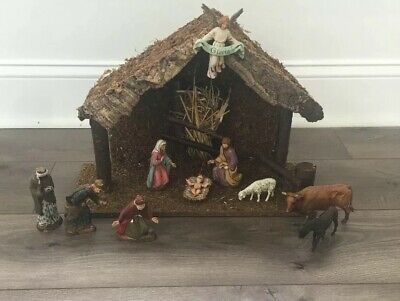
My version of the nativity story was colored by my modern, Americanized understanding of Jesus’ birth. I was told Mary and Joseph were forced to seek a room in Bethlehem, where they were repeatedly told there was no room for them. A grumpy but somewhat sympathetic innkeeper probably pointed at the shabby wooden stable behind his building and agreed to let the poor couple stay there. Then, an angel told the shepherd boys in the fields about the birth, and they joined up with the wise men to adore and honor the baby and deliver gifts. It is a nice story but one colored by my western understanding.
The historically accurate story is not only more fascinating but also fulfilled prophesy and places Jesus’ birth in the proper cultural context. Perhaps, God intended for there to be no room in the inn. Maybe, He wanted His Son to be born in a stone manger in a very special place: Migdal Eder, the Tower of the Flock as the paschal lamb of God.

A tower similar to what Migdal Eder might have looked like
Scripture tells us Caesar Augustus issued a royal decree for all his citizens to go to the town of their ancestors to be counted and taxed in a special census. Joseph, as a descendant of David, traveled with his very pregnant wife, Mary, to Bethlehem. David, Joseph’s ancestor, was born in Bethlehem, where he served as a shepherd boy before meeting Goliath.
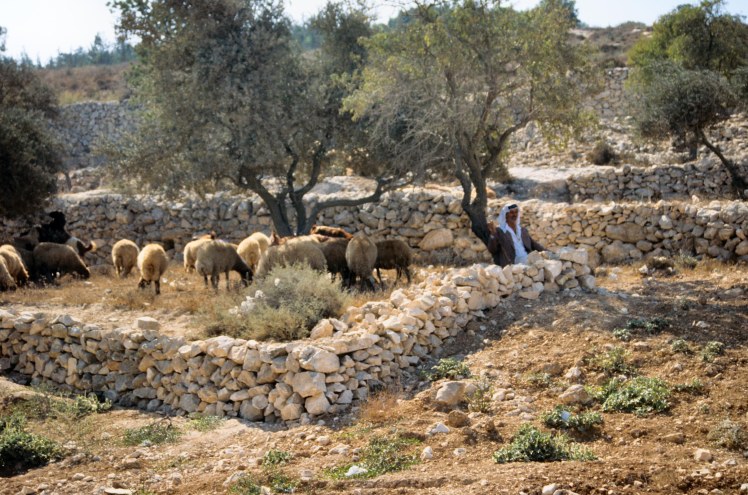
A Modern Sheephold shows how the Levitical shepherds tended the flocks in the
fields of the Shepherds near Bethlehem in Israel.
At the time of Jesus’ birth, Bethlehem had a population of about three hundred and was the area where Levitical shepherds raised lambs for sacrifice at the Temple in Jerusalem. These special shepherds were trained and tasked with the responsibility of discerning which lambs were suitable for sacrifice, as only an unblemished lamb was acceptable.
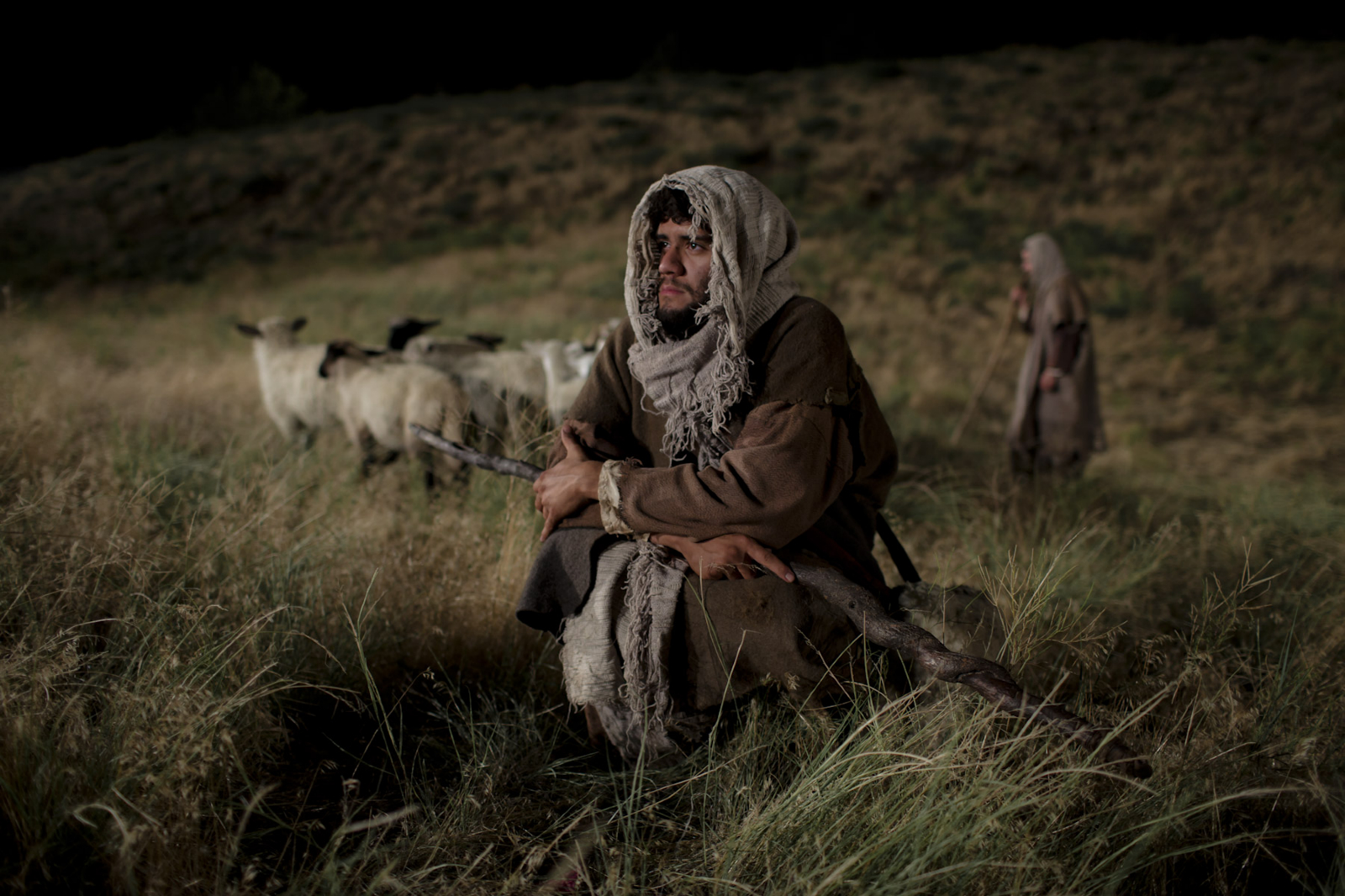
Keeping the young lambs safe and clean was not an easy task in this rocky area, so the chosen lambs were kept protected by wrapping them in strips of cloth known as swaddling cloth. The cloths or bands kept the lamb warm and calm. Any blemish from a scrape or injury would require the lamb to be rejected and sent out with the other lambs and sheep who were just ordinary stock. A passage in the Mishnah also verifies the conclusion that the flocks of sheep were destined for Temple sacrifices.
As we reimagine that night over 2,000 years ago, envision the young couple arriving in the town of Bethlehem as Mary was about to give birth. Mary and Joseph likely didn’t go knocking on every door, and there were no hotels or inns as we know today. Their only option was to find a relative who might have welcomed them in or to find a stranger who would have willingly offered them a room in their home for a price. But we know that didn’t happen.

To complicate the overcrowding in Bethlehem because of the census, there was a greater problem for the young couple. Our Palestinian Christian guide in Bethelemen, Lahdo Shio, noted that any Jew would have recognized Mary was about to give birth, and that meant blood would be shed, making their host’s home ceremonially unclean. Mary and Joseph’s option was to accept the only accommodation available: a stable or cave of some sort.
Caves and stones were the building materials of most structures back in ancient times. Jesus’ birthplace may have been a cave for the livestock with a person’s house built on top, but it is most likely Jesus was born at Migdal Eder or the Tower of the Flock. This watchtower from ancient times was used by the shepherds for protection from their enemies and wild beasts who stalked the flocks. It was also where they brought the ewes to deliver their lambs.

Migdal Eder, located about 2,000 paces from Bethlehem, was a tower on the road between Bethlehem and Jerusalem and is mentioned in the Old Testament by the prophet Micah who foretold the Messiah would be born in Bethlehem, and He would come to “the tower of the flock.”
Micah 4:8 “And thou, O tower of the flock, the stronghold of the daughter of Zion, unto thee shall it come, even the first dominion; the kingdom shall come to the daughter of Jerusalem.” As Christians, we know that all the prophecies concerning the Messiah Jesus would be fulfilled, so this one cannot be ignored.
In earlier ancient times, Migdal Eder was a military tower erected to view the valley on the edge of Bethlehem to protect the city. This structure was first mentioned in Genesis 35:21, “And Israel journeyed, and spread his tent beyond the tower of Eder.”
After Jacob left Bethel, he came to Eder (the tower), and there Rachel delivered Benjamin and then died. After burying Rachel, Jacob moved his flocks beyond the tower of Eder. This pinpoints the location as being just north of present-day Bethlehem.
Jesus, the Messiah, was born as a sacrificial lamb in the same place where all other unspotted and unblemished lambs were born and then consecrated for sacrifice. John the Baptist grew up knowing the stories and prophesies of Jesus, his cousin. When he saw Jesus, he said, “Behold the Lamb of God.”
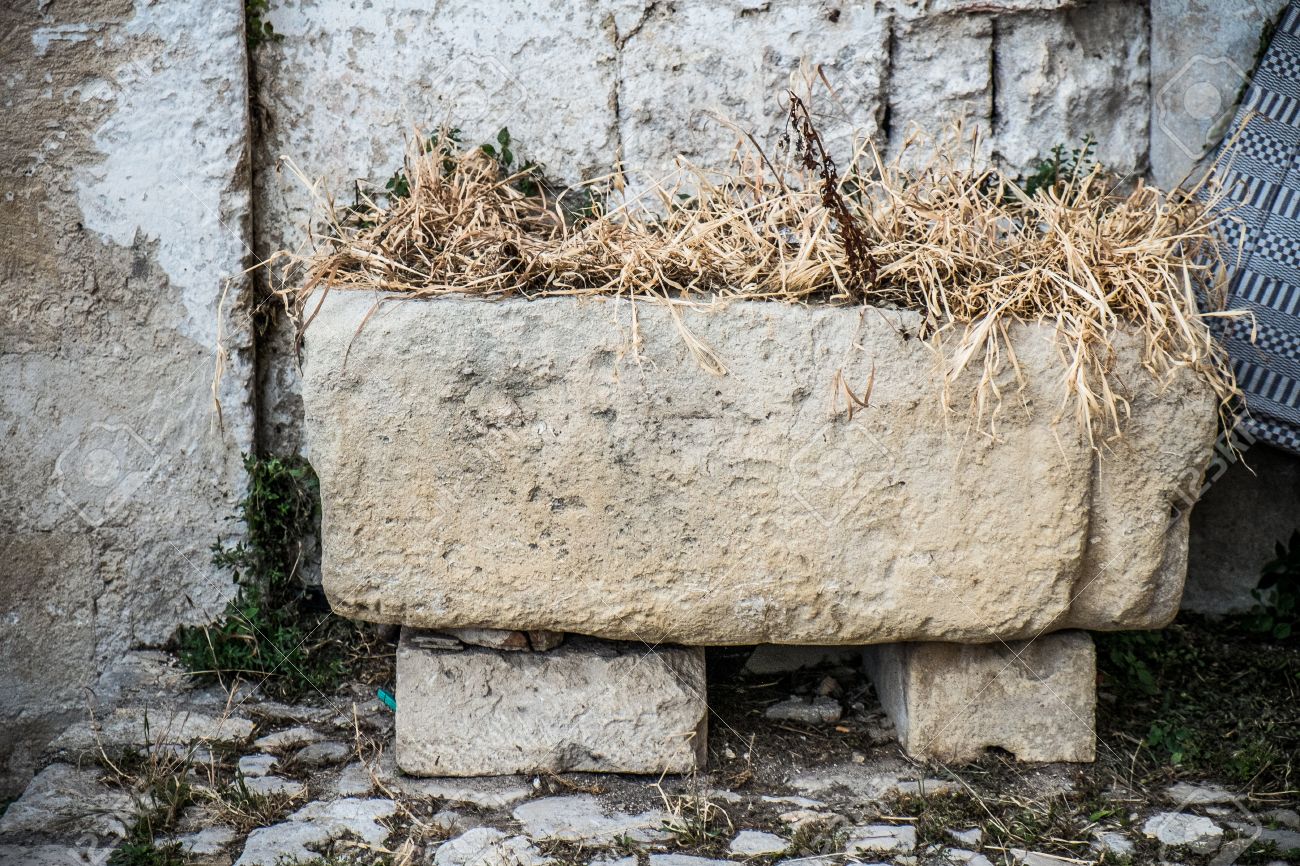
Stone manger
Scripture tells us Jesus was born in a manger, stall, or crib where animals are kept, like that of Migdal Eder. The manger was likely the stone structure where the lambs were inspected by the Levitical shepherds within the Tower of the Flocks. The swaddling cloths or bands intended to protect the chosen sacrificial lambs hung on posts and were used on this holy night to cover and warm the baby Jesus.
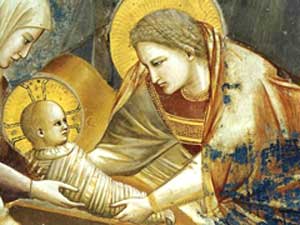
The Levitical shepherds who watched over the lambs and sheep in the fields and hills near the Tower of Flocks would have been well acquainted with the prophecies concerning the birth of the Messiah. They understood the signs the angels had given them. When the angel of the Lord came to them, they knew exactly where they would find the baby.
Every prophesied detail came true before their eyes as these special shepherds found Mary and Joseph, and the babe lying in the manger. Like the lambs all around him, Jesus lived a sinless and spotless life. When His time had come, he became the perfect sacrifice for the sins of the world.

The scriptures, history, and setting all fit together. Jesus was to be born in Bethlehem, at Migdal Eder, and then placed in the stone manger used only for the birth of sacrificial lambs. The significance of Jesus’ birth is that in God’s time, His son came exactly as the Father had promised. Surely as his past promises have been kept, so will God’s promises for the future. That was the promise of Micah 4:8, and Galatians 4:4-5 provides believers comfort and assurance:
“But when the fulness of the time was come, God sent forth his Son, made of a woman, made under the law, to redeem them that were under the law, that we might receive the adoption of sons.”
At Christmas time, we celebrate that Jesus is the shepherd of our souls (1 Peter 2:25) who died for our sins and who redeems us to reign and rule with Him for eternity. The ruins of the Tower of the Flock at Migdal Eder may never be unearthed, but scripture has already verified the authenticity of its existence. The shepherds from the first to fourth centuries kept the location alive in their stories, and a Byzantine monastery was built over Migdal Eder in the fourth century.
The historical details of Jesus’ birth add clarity and a sense of wonder and awe to the revised story. Indeed, this is very Good News!

This article is based on research conducted by the author when she visited Bethlehem in December 2019. Thank you to Lahdo L. Shio, our Christian guide in Bethlehem, who verified this information and taught me some important insights shared in this story.
Other resources:
Negev, A. (1990). In The Archaeological encyclopedia of the Holy Land (3rd ed.). New York: Prentice Hall Press
The Sign Given to the Shepherds (Dec 25, 2019) Bible.org
A Visual Guide to Bible Events (2009) Martin, Beck and Hansen, Baker Publishing
Holy Land Lecture Series by Pastor Dan Travis, Blacklick, Ohio
Thank U Donna for this detailed account of Jesus birth! (i.e. actual location, a stone crib, a cave-like dwelling, details surrounding shepards/ sheep/ swaddling cloth, etc) Powerful!
Merry Christmas!
Trish
LikeLike
Hi Donna. Did you mention in some article about this topic that you had visited Israel and had noted a recent dig that someone considered might be Migdol Eder? I can’t find the page I read that on. Thanks, Andrew in Australia
LikeLike
My friend, who is a registered tour guide in Bethlehem, told me that no concrete evidence dating back to the first century exists. The most reliable is the oral tradition of the shepherds that carried on through the 300s AD when the first Byzantine monastery (approx 395 AD) was built. I don’t believe any remnants remain that take the form of the tower. Probably just stones that once were the Tower of the Flock. One thing to remember is that the Christian church isn’t anxious to consider other possibilities that might invalidate the structures that bring in huge tourist and pilgrim monies. It was Constantine’s mother, Helena, who surveyed the Holy Land around Jerusalem and Bethlehem to determine the sacred sites. Since Constantine was a marginal Christian, or maybe not a true follower at all, I’m not convinced her efforts found the real sites. Tradition vs. real history and real archaeology.
LikeLike
An archeologist from our church who digs only in Israel revealed this about 10 years ago. His name is Dr Smith. God’s Word is sufficient not the practices and cultural norms. I’ve mentioned this to different preachers who showed no interest at all. I was totally puzzled. Every jot , every tittle is ordained by Almighty Jehovah. What beauty, how awesome are the ways and Word of God with every minute detail falling in the line of His powerful, prophetic Word. The archeologist actually said they dug that site and just one of the details he revealed was where he was delivered was not only the same site where the Passover lambs were examined and chosen but also is the same dimensions as the Holy of Holies- which is a diametrically opposed to what Satan would have us believe- just a place in a dirty barn- cattle lowing. What wonder what grace that He would show us more about a Jesus. ❤️
LikeLike
Pingback: Truths Of the Real Christmas Account – Truth in Love Canada
Thank you for your insiteful article. For clarification Jesus was not born in a manger, he was laid in a manger. Cloths were made of linen priests clothing.
LikeLike
Pingback: Uncovering the Deeper Significance To Jesus' Birthplace | God TV
I so love this. I’m so glad to have found you today. I wrote a blog post about this a couple of years ago, when God revealed this beautiful story to me. It became a treasure that I will keep in my heart forever, like Mary. It is not well received by Christians or pastors, but thanks to your connections and research I believe we have found the truth. (Just as Mount Sinai is NOT in the Sinai Peninsula, but rather in Saudi Arabia — Midian – as the Bible says it is. Unlike the traditional site, Jabal Al Lawz is brimming with archealogical evidence). Exciting times we are living in. THE ROCKS ARE CRYING OUT!!!!!!
LikeLike
Thank you so much for you have posted such a mind blowing article. But I have a question about this topic, what is your opinion about the connection between The Midgal Eder and The Nativity Church in Bethlehem? Aren’t they two different places? So if Jesus really was born in the Midgal Eder, then how about the nativity church since it has traditionally believed as the birth place of our Savior?
LikeLike
Sorry that I haven’t replied in a year! I doubt that the Church of the Nativity is the actual place of Jesus’ birth. Also, I doubt it will ever be proven where Jesus was actually born. It is so sad that it is now in an occupied area. The problem is that Helena, Constantine’s mother was in charge of designating these sites as authentic. She also brought back to Constantinople the three crosses (Jesus’ and the two thieves,) the crown of thorns, and Jesus’s robe. Helena was the world’s worst archeologist. I don’t give much credence to what was established under her guidance. Some reports are that she used torture to gain information.
LikeLike
I just returned from Israel after being there for a week, so I’m fresh off the plane! One thing that strikes me with Christian sites all over Europe is the challenge of authenticity. For example, I visited St. Paul’s Outside the Walls in Rome three weeks ago. I’ve also been to the Vatican and St. Peters in Chains and St. John Laterno. If you believe the claims of these three churches, Paul and Peter were two-headed. because of all the body parts of these apostles housed in these churches.
I don’t believe we will ever know for sure exactly where Jesus was born. Midgal Edar is in Bethlehem, as is the Church of the Nativity. Many of these churches were located by Helena, mother of Constantine. If you listen to Jewish history, they claim she had them tortured in order to tell her the exact location of various important Christian sites. I can also imagine human nature entering into the picture as she tried to find the locations. Perhaps an unscrupulous person might have wanted to sell her their property and made false claims. She came about 300 years after the New Testament time, so the accuracy is questionable. I prefer to accept scripture from the Old Testament that prophesies that the Messiah will be born at Migdal Edar. All we know is that Jesus was born somewhere in that area. I’m content with that.
When I was in Jerusalem last week, I managed to find the Roman era street of the Via Delarosa. If you go to the old city, you will find swarms of tour groups, some carrying large crosses, going down the via Delarosa. They don’t seem to know that what they are walking on is a medieval street. Jerusalem was utterly destroyed by the Romans around 70 AD as was described by historians including Josephus. Jerusalem was rebuilt upon the rubble by the Romans. A wonderful excavated street from the first to second century AD can be found by going through the Ecco Homo convent doors. They sell admission to the streets about 20-30 feet below modern Jerusalem. I will be writing an article about that, so look for it in a month or two.
There are other places in Israel where you know Jesus was: the Mount of Olives, Capernaum, Caesarea Philippi, etc. I bought a very nice visual map that locates where Jesus was in Jerusalem based on scripture. I hope I can share it somehow.
LikeLike
Pingback: There Had to Be a Manger: How Jesus' Birth Predicted His Death